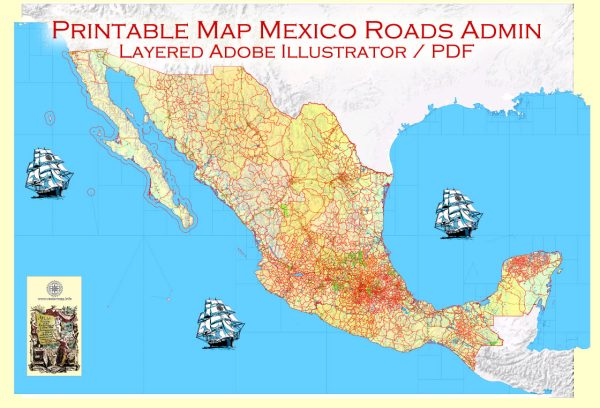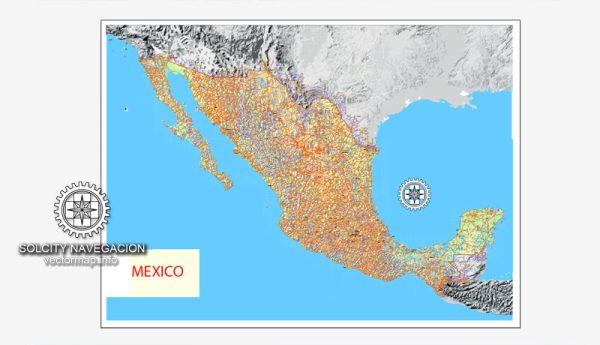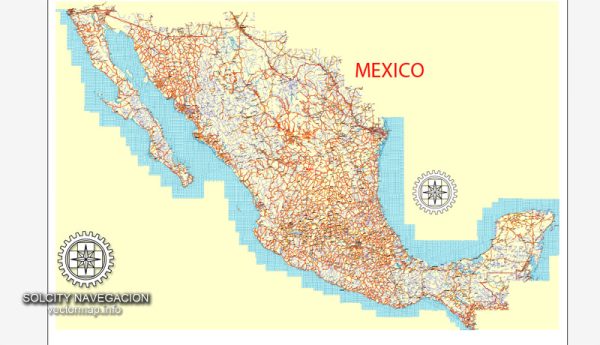Mexico is a federal republic composed of 32 administrative entities, which are divided into 31 states and one federal district. These administrative territories vary in size, population, and government structure. Here is a general description of Mexico’s administrative territories:
- Aguascalientes: Located in central Mexico, Aguascalientes is known for its industrial and manufacturing activities. The capital is also named Aguascalientes.
- Baja California: Located in the northwest, Baja California is known for its coastal cities and tourism, with Tijuana being a major border city.
- Baja California Sur: This state occupies the southern half of the Baja California Peninsula, known for its beautiful beaches and natural landscapes.
- Campeche: Located in the Yucatan Peninsula, Campeche is known for its historical sites and coastal areas, including the city of Campeche.
- Chiapas: In southern Mexico, Chiapas is known for its indigenous cultures, natural beauty, and the city of Tuxtla Gutiérrez.
- Chihuahua: The largest state in Mexico, Chihuahua is known for its vast deserts and the city of Ciudad Juárez, a major border crossing with the United States.
- Coahuila: Located in northern Mexico, Coahuila is known for its industry and the city of Saltillo.
- Colima: A small state on the Pacific coast, Colima is known for its beaches and the city of Colima.
- Durango: Durango, located in north-central Mexico, is known for its rich mining history and the city of Durango.
- Guanajuato: This state is famous for its colonial architecture, historic cities like Guanajuato, and its role in the Mexican War of Independence.
- Guerrero: Located on the Pacific coast, Guerrero is known for its tourist destinations such as Acapulco and Zihuatanejo.
- Hidalgo: Hidalgo is known for its historical sites, including the ancient city of Teotihuacan.
- Jalisco: Jalisco is famous for its cultural contributions, including mariachi music and tequila. Its capital is Guadalajara.
- Mexico City (Ciudad de México): The capital and largest city of Mexico, it’s also a federal district, separate from the states. Mexico City is the country’s political, economic, and cultural center.
- Mexico State (Estado de México): Surrounding Mexico City, this state is populous and includes municipalities that make up the greater metropolitan area of the capital.
- Michoacán: Known for its diverse landscapes, Michoacán is famous for its indigenous traditions, such as Day of the Dead celebrations.
- Morelos: This state is known for its pleasant climate and historic sites, including Cuernavaca.
- Nayarit: Located on the Pacific coast, Nayarit is known for its beaches and tourist destinations.
- Nuevo León: In northern Mexico, Nuevo León is a major industrial and economic hub with the city of Monterrey as its capital.
- Oaxaca: Known for its rich indigenous culture, traditions, and archaeological sites, Oaxaca is located in the south.
- Puebla: Famous for its colonial architecture, Puebla is home to the city of Puebla and numerous historic landmarks.
- Querétaro: This state is known for its industry and the city of Santiago de Querétaro, a UNESCO World Heritage site.
- Quintana Roo: Located on the eastern Yucatan Peninsula, Quintana Roo is a popular tourist destination, featuring cities like Cancún and Playa del Carmen.
- San Luis Potosí: This state is known for its mining history and the city of San Luis Potosí.
- Sinaloa: Located in northwest Mexico, Sinaloa is known for agriculture, fishing, and the city of Culiacán.
- Sonora: In northwestern Mexico, Sonora is known for its desert landscapes and the city of Hermosillo.
- Tabasco: Located in the southeast, Tabasco is known for its oil production and cultural heritage.
- Tamaulipas: In northeastern Mexico, Tamaulipas has a significant border with the United States and is known for its industry and trade.
- Tlaxcala: A small state in central Mexico, Tlaxcala is known for its historical and cultural significance.
- Veracruz: Located on the Gulf of Mexico, Veracruz is known for its port city and cultural heritage.
- Yucatán: This state is known for its Mayan heritage, archaeological sites, and the city of Mérida.
- Zacatecas: Known for its mining history and colonial architecture, Zacatecas is located in north-central Mexico.
Each of these states and the federal district has its own unique culture, geography, and history, contributing to the diversity of Mexico’s administrative territories.




 Author: Kirill Shrayber, Ph.D.
Author: Kirill Shrayber, Ph.D.